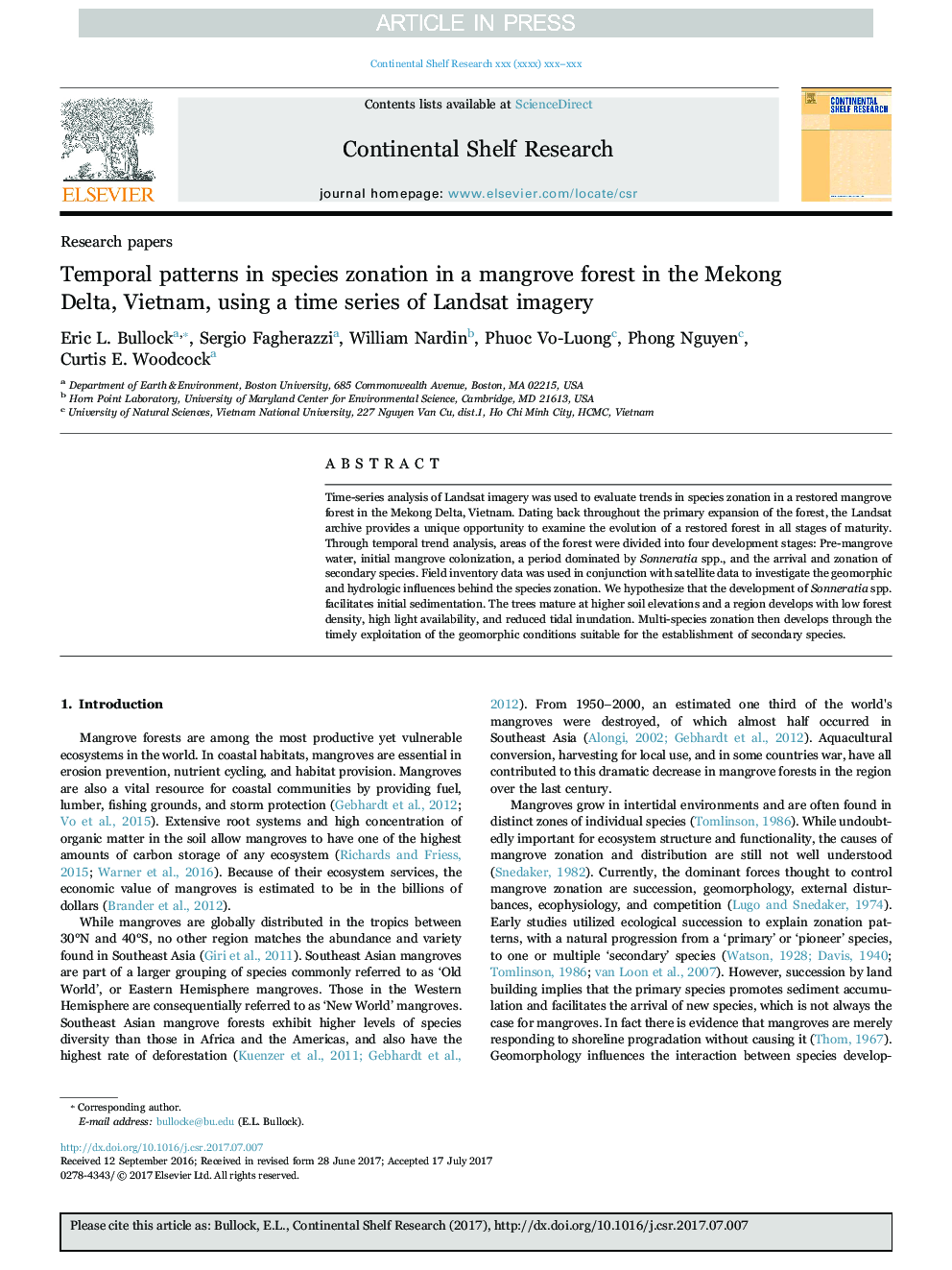| Article ID | Journal | Published Year | Pages | File Type |
|---|---|---|---|---|
| 5764371 | Continental Shelf Research | 2017 | 11 Pages |
Abstract
Time-series analysis of Landsat imagery was used to evaluate trends in species zonation in a restored mangrove forest in the Mekong Delta, Vietnam. Dating back throughout the primary expansion of the forest, the Landsat archive provides a unique opportunity to examine the evolution of a restored forest in all stages of maturity. Through temporal trend analysis, areas of the forest were divided into four development stages: Pre-mangrove water, initial mangrove colonization, a period dominated by Sonneratia spp., and the arrival and zonation of secondary species. Field inventory data was used in conjunction with satellite data to investigate the geomorphic and hydrologic influences behind the species zonation. We hypothesize that the development of Sonneratia spp. facilitates initial sedimentation. The trees mature at higher soil elevations and a region develops with low forest density, high light availability, and reduced tidal inundation. Multi-species zonation then develops through the timely exploitation of the geomorphic conditions suitable for the establishment of secondary species.
Related Topics
Physical Sciences and Engineering
Earth and Planetary Sciences
Geology
Authors
Eric L. Bullock, Sergio Fagherazzi, William Nardin, Phuoc Vo-Luong, Phong Nguyen, Curtis E. Woodcock,
